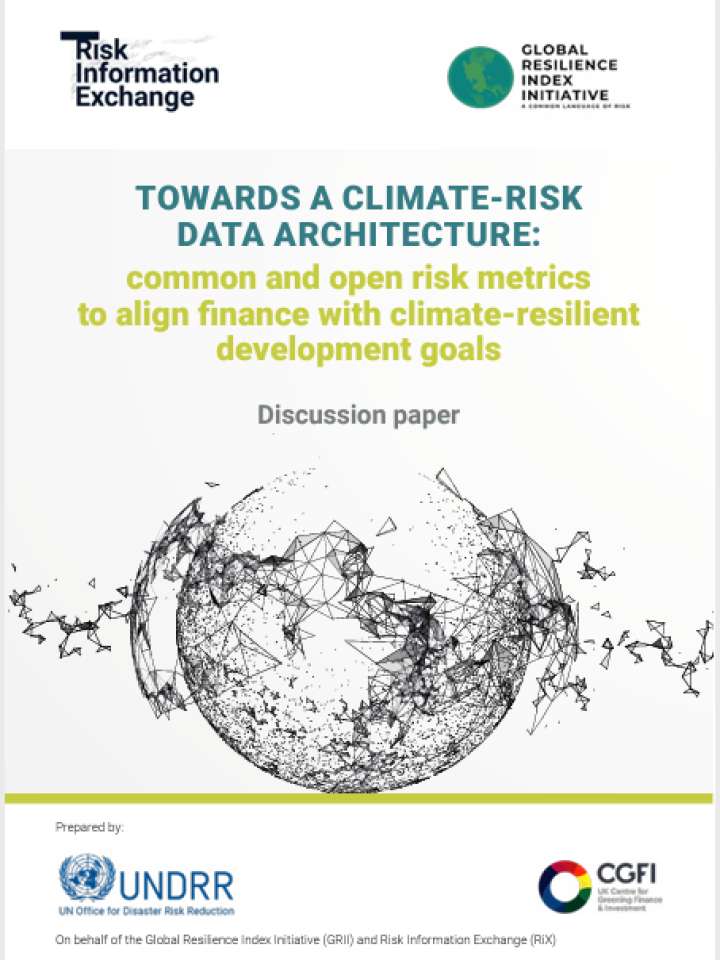Towards a climate-risk data architecture: common and open risk metrics to align finance with climate-resilient development goals
This discussion paper was prepared to showcase the need for – and the benefit of having – a globally consistent, open baseline dataset of climate risk and resilience metrics as a global public good to help mobilize finance for adaptation. The Glasgow Climate Pact agreed at COP26 included the call to double climate finance for adaptation. To date, estimated adaptation costs in developing countries are five to ten times greater than current public adaptation-finance flows, and the adaptation finance gap is widening. Scaling-up private finance is essential, to fill the financing gap,2 yet today this accounts for only a minor share of global climate finance flows, particularly in the Global South.
The take-aways from this discussion paper for the design of a common, open climate risk data architecture include:
- Disclosure: Country or regional and sector average common risk metrics could provide a high-level screening of risk as a proxy where detailed data is not available.
- Infrastructure financing: Funds find it difficult to assess projects when standards are fragmented. Common metrics would facilitate a high-level screening and detailed assessment of portfolios and projects.
- Stress testing and scenario analysis: A standard set of baseline data on physical climate-related hazards and risks could support financial institutions in their climate scenario analysis. This could help develop a common data standard for reporting of physical risks in financial institutions’ regulatory or stress-testing returns.
- Fiscal resilience and sovereign financing instruments: Open-source common risk metrics empower actors, especially in emerging economies, to consider physical climate risk systematically in policy making and risk assessments.
Explore further
